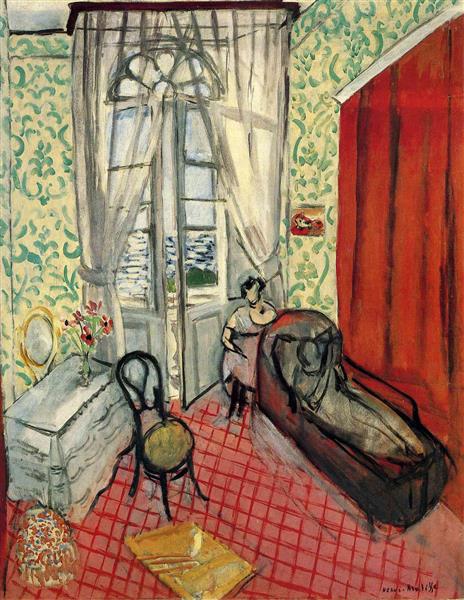Description
The painting "Femmes Au Canapé Ou Le Divan", created in 1921 by Henri Matisse, is a vibrant representation that encapsulates much of the spirit and innovation characteristic of the artist. This work, in its 47x60 centimeter format, transports us to a universe where the subtlety of detail and the boldness of color merge to provide an aesthetic experience that challenges traditional pictorial conventions.
In the composition, Matisse depicts two women seated on a sofa, a scene of everyday life tinged with an aura of contemplative serenity. The arrangement of the figures is simply masterful: the bodies are relaxed, almost indifferent to the impertinent gaze of the viewer, contributing to an atmosphere of unadulterated intimacy. The curved lines of the sofa and the relaxed postures of the women contrast with the rectilinear rigidity of the background elements, creating a visual balance that is characteristic of Matisse's style.
Color, a fundamental element in Matisse's work, plays a crucial role here. The figures and furniture are painted in vibrant tones - blues, greens, and pinks - that seem to come to life on the canvas. Matisse uses color not only to define shapes but also to generate a sense of depth and dynamism. The combination of warm and cool colors, often juxtaposed boldly, infuses the scene with a palpable energy that is both harmonious and tense. Matisse's chromatic palette has always been an essential tool for conveying complex emotions, and in "Femmes Au Canapé Ou Le Divan", it reflects warmth and tranquility, as well as a dreamlike sensation.
Another noteworthy element is the simplification of forms and details. The women's faces lack precise definition, thus accentuating the universality of the figures and emphasizing the expressiveness of their postures and spatial relationships. This simplification approach is framed within the Fauvist movement, of which Matisse was a prominent exponent, seeking to liberate color and forms from fidelity to visual reality in favor of a more personal and emotional subjectivity.
The history of this work is inscribed within the post-war context, a time when Matisse sought new forms of expression and increasingly moved away from naturalism, focusing on the essentialism that would mark his later years. It is in this phase that Matisse begins to experiment with different media and techniques, influenced by his stay in the Nice region, whose vibrant lights and Mediterranean colors permeate many of his works from this period.
"Femmes Au Canapé Ou Le Divan" is ultimately a celebration of form and color that goes beyond mere visual representation; it is an invitation to explore the sensory and emotional realm that only the art of Henri Matisse can offer. The painting stands as a visual testimony to the capacity of color and form to transform an everyday scene into a profoundly enriching aesthetic experience. Matisse's mastery in manipulating color and form, the compositional simplicity, and the universal emotional resonance of this work are indicative of his genius and consolidate him as one of the greats of modernity.

